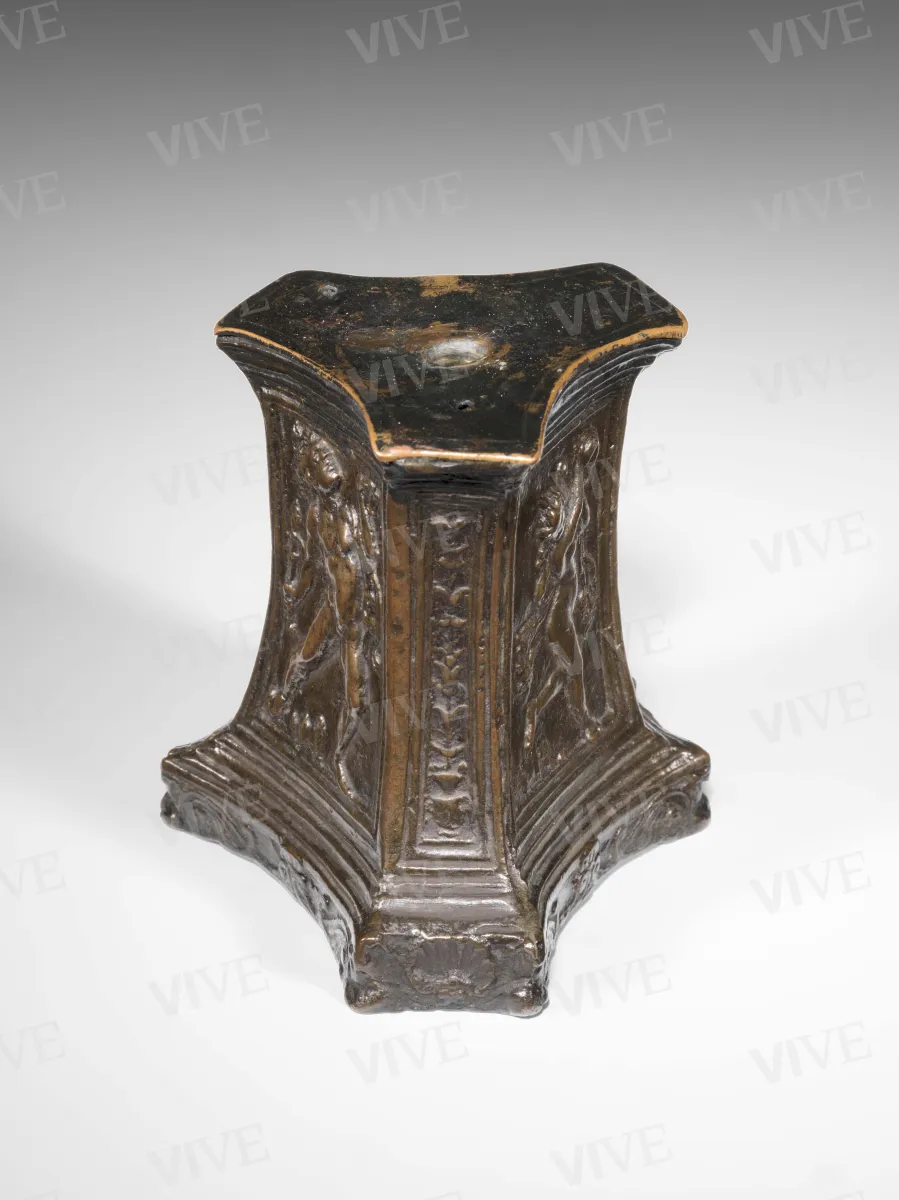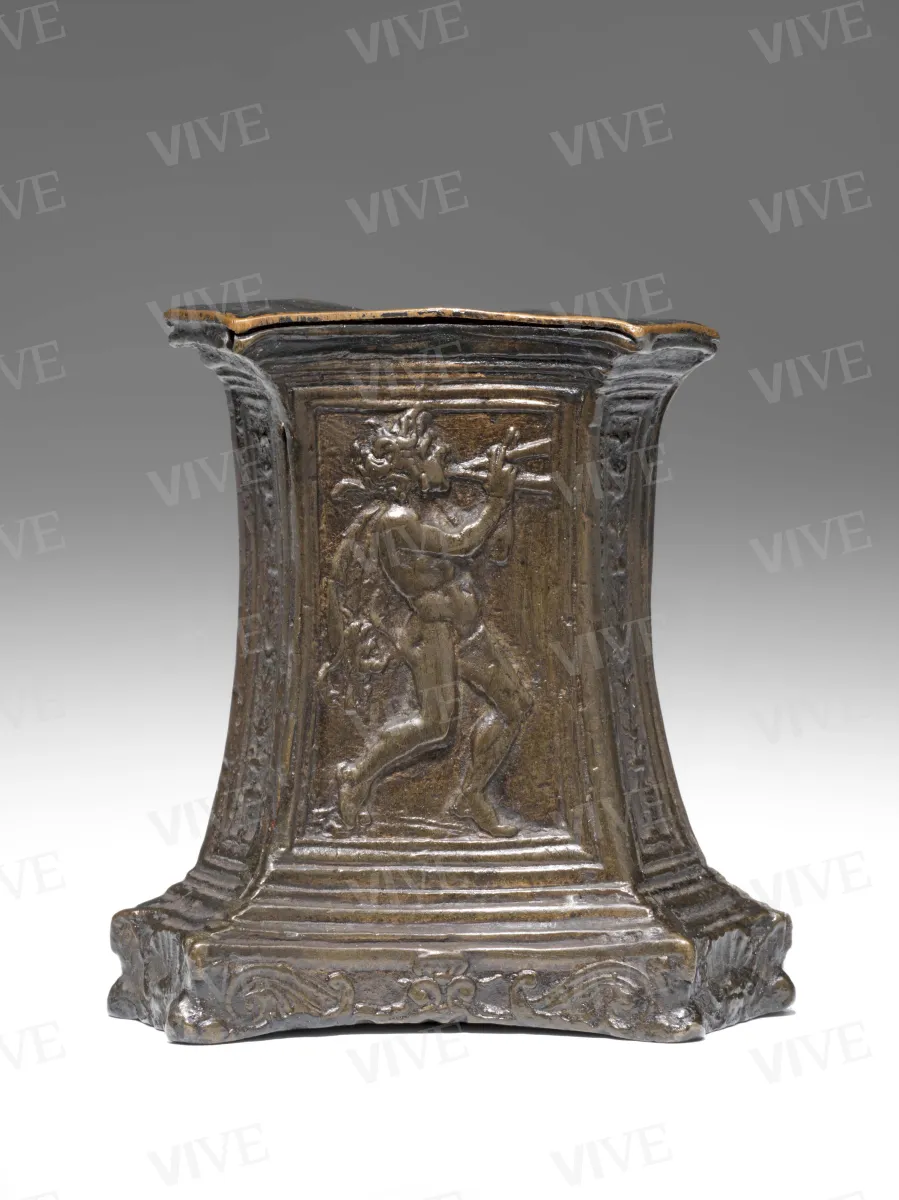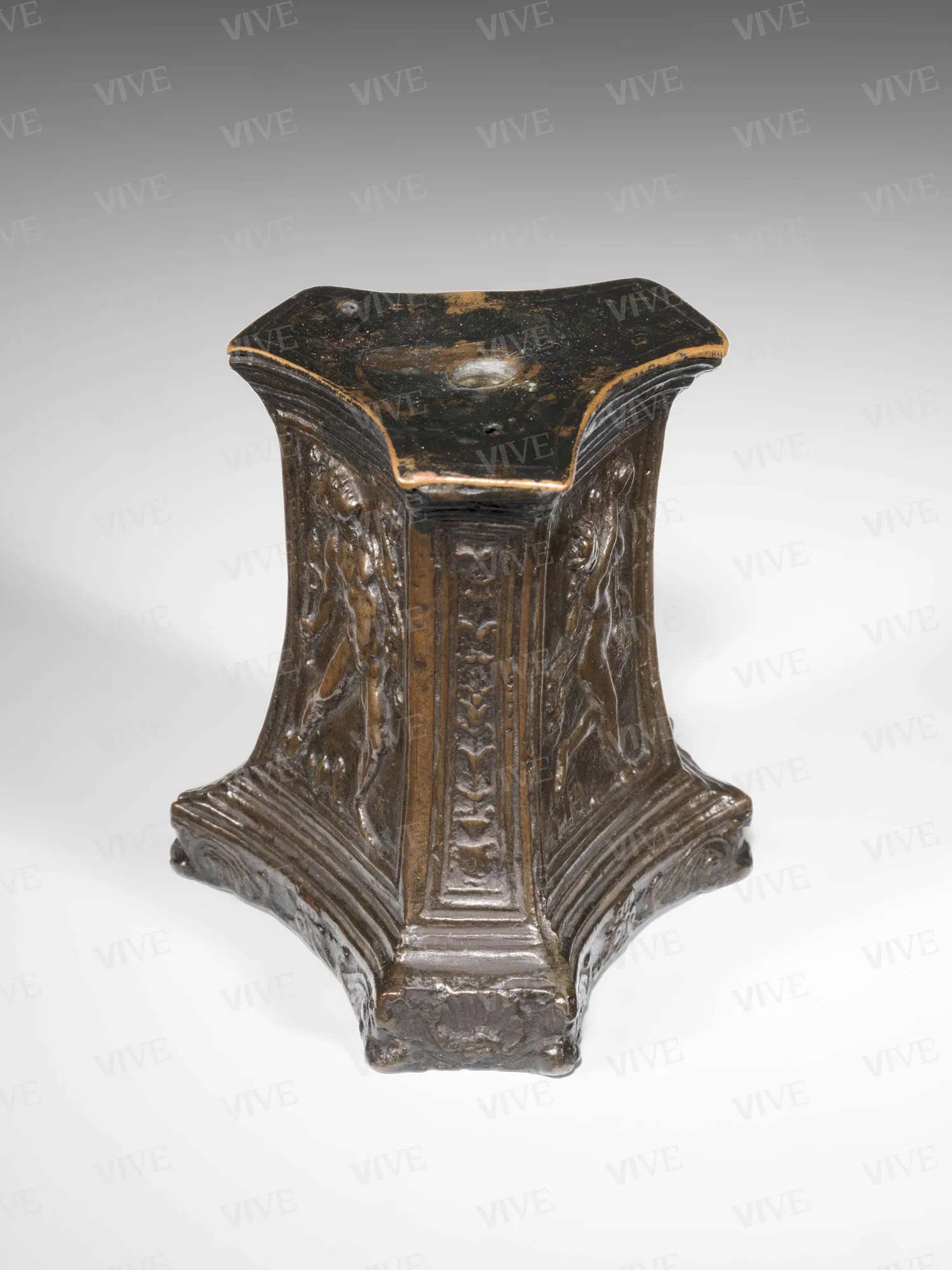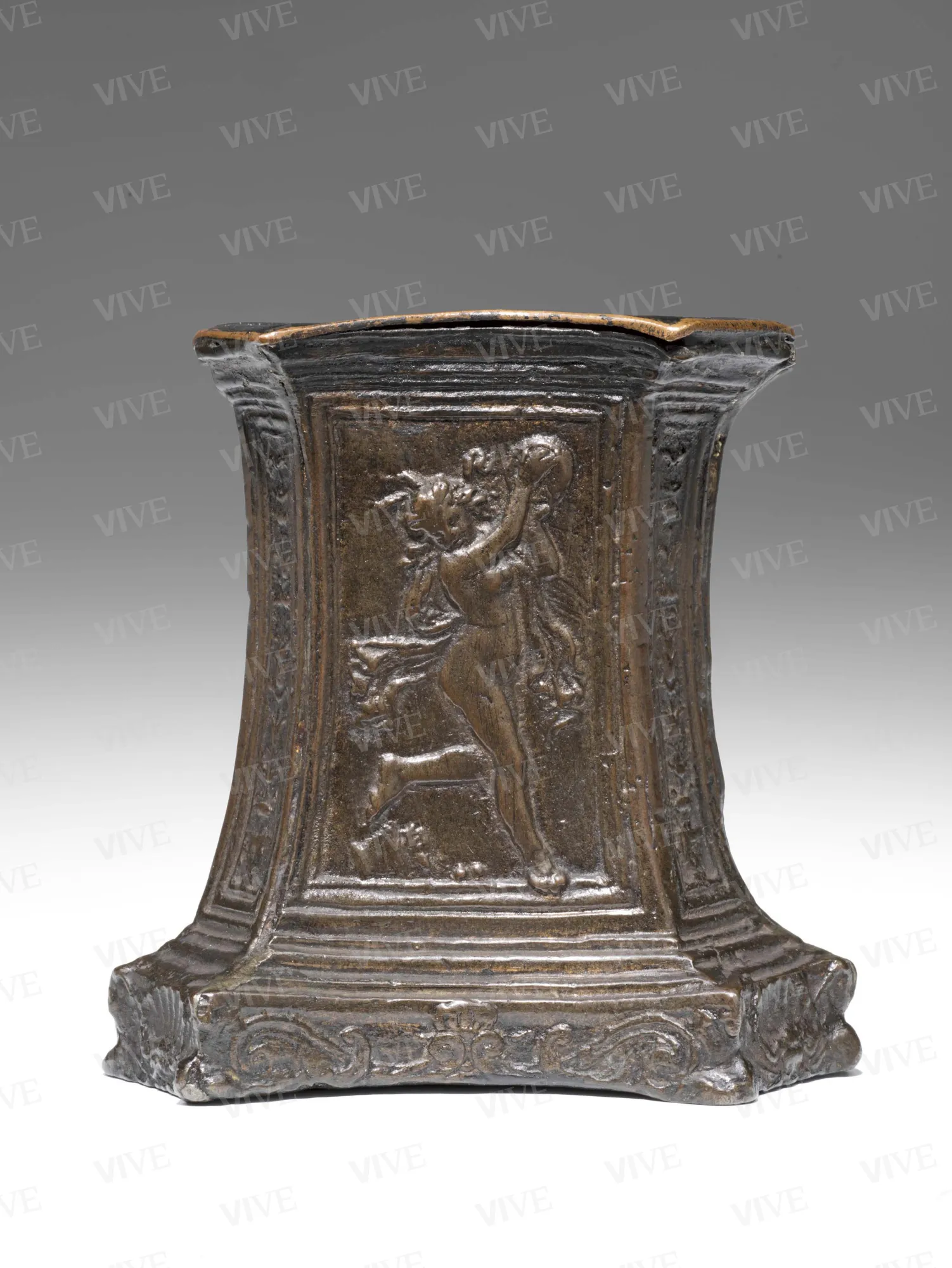Hexagonal base with Dionysian procession
Northern Italy Last quarter of 15th century
The small hexagonal base consists of a series of small plaques. Three plaques feature figures from a Dionysian procession: Dionysus; a dancing Maenad; and a Satyr playing the double flute. The remaining smaller plaques are adorned with candelabra and plant motifs. The subject matter of the figured plaques and the composition style represent the antiquarian culture of the late fifteenth century in northern Italy, specifically in the Veneto and Lombardy.
The small hexagonal base consists of a series of small plaques. Three plaques feature figures from a Dionysian procession: Dionysus; a dancing Maenad; and a Satyr playing the double flute. The remaining smaller plaques are adorned with candelabra and plant motifs. The subject matter of the figured plaques and the composition style represent the antiquarian culture of the late fifteenth century in northern Italy, specifically in the Veneto and Lombardy.
Details of work
Catalog entry
The small hexagonal base features three little plaques showing participants in a Dionysian procession, along with smaller plaques displaying candelabra and plant motifs.
The naked youth depicted standing with his head thrown back, holding a thyrsus in one hand and an amphora in the other, may be identified as Dionysus (Toderi, Vanel 1996). The other plaques also feature characters from his procession: a dancing Maenad and a Satyr playing the double flute. Both figures are naked and depicted in a Bacchic frenzy. The Maenad is shown with her arms raised, playing a cembalo, and adorned with a swirling veil. The Satyr is illustrated striding forward while playing his instrument.
Various versions of these plaques exist, mounted on objects that occasionally form hexagonal bases, such as the example found in Palazzo Venezia. Alternatively, some plaques have octagonal bases, like the inkwell in Berlin at the Staatliche Museen (inv. 2814: Bange 2022, p. 57). In the octagonal version, a fourth plaque is included alongside the three, depicting a naked Maenad viewed from behind—a figure identified by Molinier in 1886 (p. 14) as an allegory of Fortune.
It is reasonable to attribute these plaques to the figurative culture of classical inspiration that emerged in the Veneto and Lombardy regions at the end of the fifteenth century.
Molinier (1886) suggested a connection to an unspecified medallist from northern Italy and noted similar representations of the Maenad and the Satyr on the magnificent portal of the Palazzo Stanga in Cremona, now in the Louvre (attributed to Pietro da Rho, last quarter of the fifteenth century; RF 204). This serves as a reference for dating the plaques mounted in the base preserved in the Palazzo Venezia.
Clara Seghesio
State of conservation
Good.
Provenance
Rome, Collezione Barsanti, 1934, no. 53;
Rome, Museo Nazionale di Palazzo Venezia, bequest, 1934.
References
Molinier Émile, Les bronzes de la Renaissance. Les Plaquettes. Catalogue raisonné, tomo 1, Paris 1886, pp. 14-15;
Supino Igino Benvenuto, Catalogo del R. Museo Nazionale di Firenze (palazzo del Podestà), Roma 1898, p. 90, n. 271;
Goldschmidt Fritz, Die Italienischen Bronzen der Renaissance und des Barock, tomo 1, Büsten, Statuetten und Gebrauchsgegenstände, Berlin 1914, p. 52, n. 251;
Planiscig Leo, Die Estensische Kunstsammlung, vol. 1, Skulpturen und Plastiken des Mittelalters und der Renaissance, Wien 1919, p. 164, n. 258;
Bange Ernst Friedrich, Die Italienischen Bronzen der Renaissance un des Barock, vol. II, Reliefs und plaketten, Berlin und Leipzig 1922, pp. 15, 57, nn. 104, 417;
Pollak Ludwig, Raccolta Alfredo Bardanti. Bronzi italiani (Trecento-Settecento), Roma 1922, p. 75, n. 53;
Middeldorf Ulrich, Goerz Oswald, Medals and Plaquettes from the Sigmund Morgenroth Collection, Chicago 1944, p. 32, n. 216;
Santangelo Antonino (a cura di), Museo di Palazzo Venezia. Catalogo delle sculture, Roma 1954, p. 48;
Leithe-Jasper Manfred, in Feuchtmüller Rupert, Itali6nische Kleinplastiken, Zeichnungen und Musik der Renaissance, Waffen des 16. und 17. Jahrhunderts, Wien 1976, pp. 188-189, nn. 226-227;
Cannata Pietro, Rilievi e placchette dal XV al XVIII secolo, Roma 1982, pp. 46-47, n. 18;
Toderi Giuseppe, Vannel Fiorenza, Placchette. Secoli XI-XVIII nel Museo Nazionale del Bargello, Firenze, 1996, pp. 133-135, nn. 242-244;
Cannata, in Cannata Pietro (a cura di), Museo Nazionale del Palazzo di Venezia, vol. 3, Sculture in bronzo, Roma 2011, p. 38, n. 18.


















